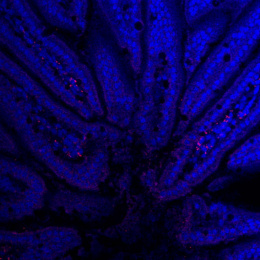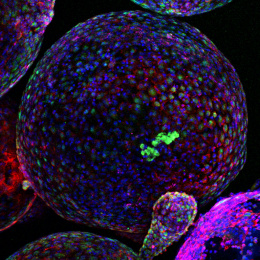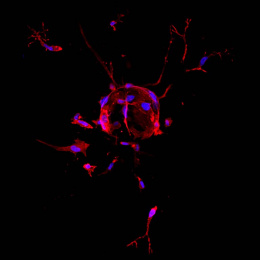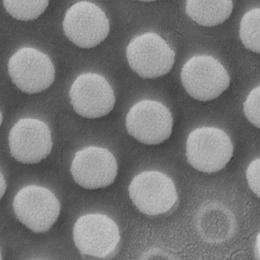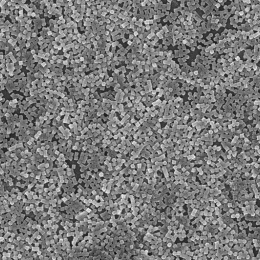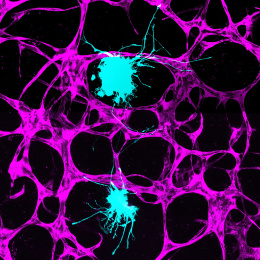Skin-Deep View on Diabetic Tissue Repair
Skin-Deep View on Diabetic Tissue Repair
Submitted by Ben Almquist and Paula Hammond in the Hammond Research Group at the Koch Institute and Kyle Quinn and Irene Georgakoudi in the Department of Biomedical Engineering at Tufts University
Koch Institute at MIT, MIT Department of Chemical Engineering
"On average, one in four diabetics will form a diabetic ulcer, which is a non-healing skin wound that is generally located on the foot. These open wounds pose a serious risk of infection and are a leading cause of non-traumatic lower leg amputation. We are developing new wound dressings that direct the regeneration and repair of wounds. In order to optimize these dressings, we are exploring how different therapies affect cells and tissues. In this image, we are using natural sources of fluorescence to characterize the distribution and structure of collagen and metabolic behavior of cells in different parts of the skin. In this image, red shows collagen fibers in the skin, the bright green is the base of a hair fiber inside a hair follicle, and the other colors are measures of the metabolic activity of various tissue structures/cells."

